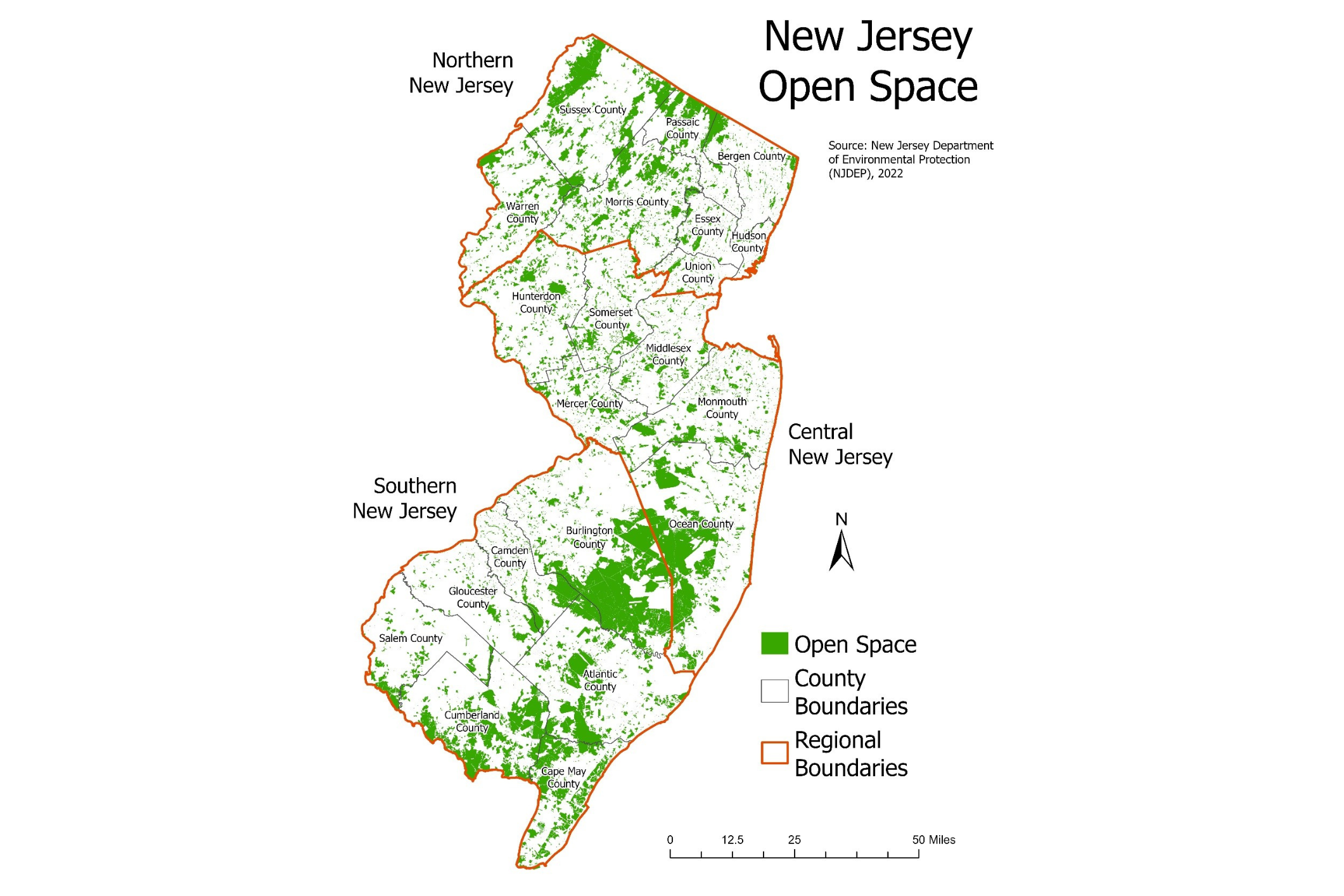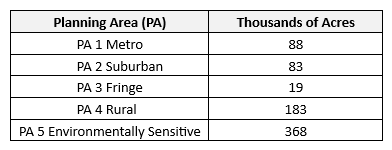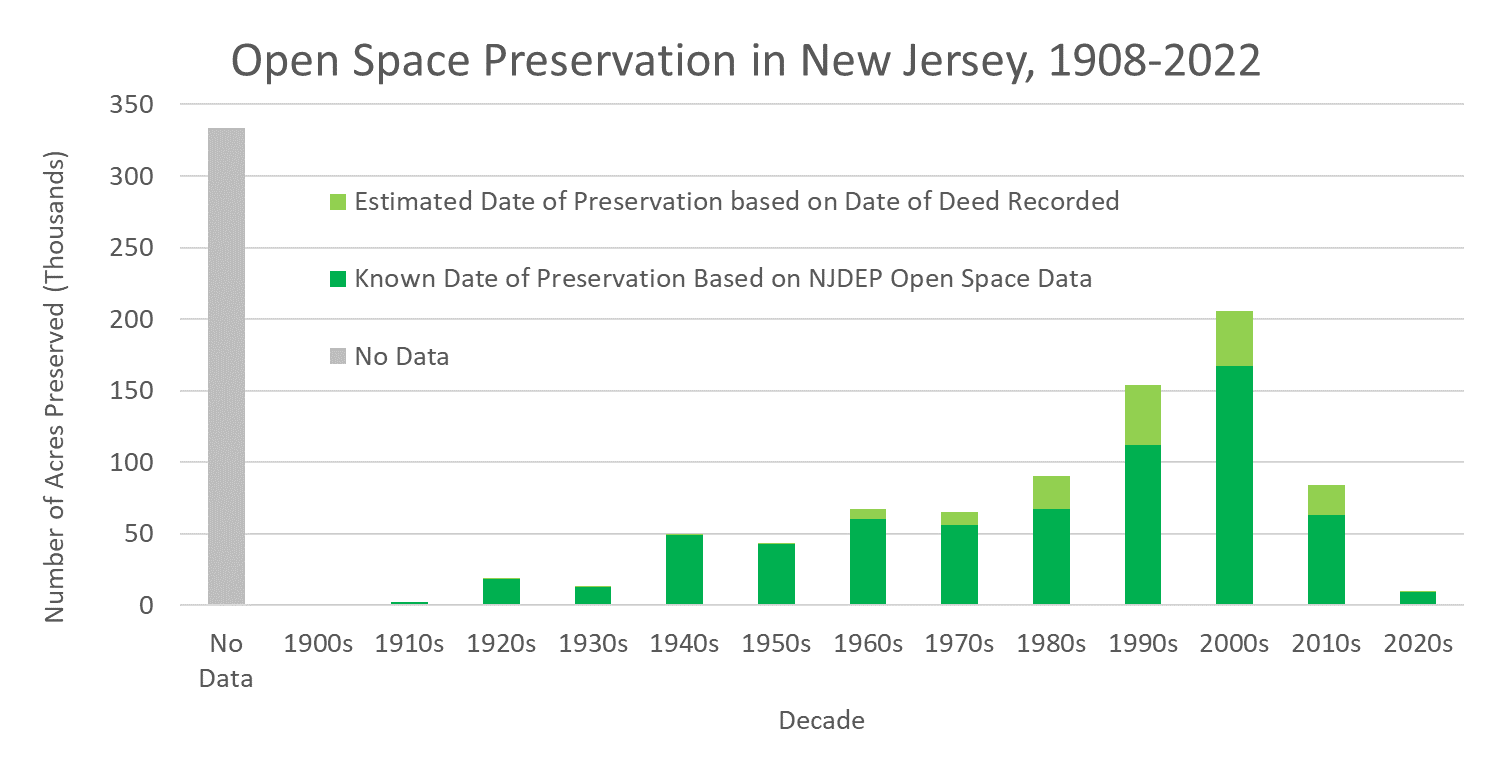One Million Acres or Bust: Initial Findings
By Eric Harris
Although it is the most densely-populated state in the nation, New Jersey has a strong legacy of preserving open space. But how are we doing lately?
On assignment for the New Jersey State Policy Lab, I’ve been working with Bob Kull, Tom Dallessio, and Smirti Singh to share initial findings on our ongoing research study, “One Million Acres or Bust: A Quarter Century of Open Space, Farmland, and Historic Preservation in New Jersey.” Our research is examining the progress of efforts to preserve open space, farmland, and historic sites as viewed through the lens of the Garden State Preservation Act, a law adopted in 1999 with the goal of preserving one million more acres of open space, farmland, and historic structures in New Jersey.
In the nearly 25 years since this act was established, how much open space currently exists in New Jersey? To answer this question, we’ve been analyzing GIS data regarding open space, which was obtained from the New Jersey Department of Environmental Protection (NJDEP). Not included in this data are most preserved farmlands and historic structures. Here are some of the preliminary findings and key takeaways:
- New Jersey currently maintains a grand total of approximately 1.14 million acres of permanently preserved open space. At the end of year 2000, there were approximately 964.3 thousand acres of open space, according to the New Jersey State Development and Redevelopment Plan. This suggests that an additional 171,800 acres have been preserved since 2001.
- More than 50% of all open space in New Jersey is located within the following five counties (ranked in order): Burlington, Ocean, Cumberland, Atlantic, and Sussex. The five counties containing the least amount of open space (cumulatively, less than 6% of the state total) include Hudson, Union, Essex, Gloucester, and Bergen.
- Southern New Jersey contains 40% of New Jersey’s total land area and 46% of the state’s preserved open space. Northern New Jersey (27% of the total land area) and Central New Jersey (33% of the total land area) contain approximately 26% and 28% (respectively).
- Nearly two-thirds of preserved lands are both owned and maintained by the state of New Jersey. The remaining one-third are owned/maintained by municipalities, counties, and non-profit organizations.
- New Jersey’s major Planning Areas designated in the 2001 Development and Redevelopment Plan (which exclude the Highlands, Pinelands, and Meadowlands areas) currently contain the following amount of open space:
- As shown in the graphic below, the highest levels of open space preservation in New Jersey occurred during the 1990s and 2000s. However, data shows that the amount of open space preserved in the 2010s declined from previous decades.
- When the Garden State Preservation Act was first adopted, it received funding through a dedication of a portion of the New Jersey sales tax, which was used to pay off bonds, allowing more funds to be available earlier in the program. However, in 2014 voters approved an amendment to the state constitution, and the State replaced this funding with a portion of the corporate business tax to move from bonding to a pay-as-you-go program. A period of delay in changing the funding source might account for a portion of the decline in open space preservation during the 2010s.
- It’s important to note that the Great Recession in the 2000s and the COVID pandemic also affected the process of preserving open space. More analysis of this will need to be done.
As this project continues, we will be analyzing available data regarding preserved farmland and historic preservation sites and will also be collecting qualitative information via interviews with representatives from State agencies and non-profit land trusts. The final project should provide a comprehensive picture into how New Jersey has preserved land over time and how it might ensure its success moving forward.
Eric Harris is a graduate student in the Edward J. Bloustein School of Planning and Public Policy at Rutgers University. He is working toward a Master of City and Regional Planning degree in 2023.



